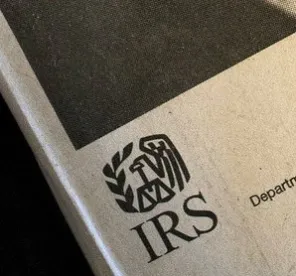Responding to volatility in the market and liquidity constraints caused by the COVID-19 pandemic, in Notice 2020-25 (the “Notice”), the IRS provides temporary relief for governmental issuers seeking to purchase their own tax-exempt variable rate demand obligations that are “qualified tender bonds” (“QTBs”) and/or tax-exempt commercial paper (“CP”), allowing an issuer to purchase its own debt through the end of 2020.
Background
To avoid drastic rate increases, failed remarketings of QTBs, and/or failed rolls of CP that might result during periods of market volatility – like what was experienced earlier in the year due to the COVID-19 pandemic – issuers and conduit borrowers may consider purchasing their own QTBs and CP and holding them until the market settles. Subject to certain exceptions described below, when an issuer purchases its own bonds, including QTBs, the bonds are generally retired for purposes of federal tax law (even if the bonds are still outstanding for state law purposes) and, therefore, lose the benefit of tax exemption. For CP, a failed roll means that there is no new issuance of CP and no debt outstanding for either federal tax or state law purposes.
Existing rules allow most conduit borrowers, such as 501(c)(3) health care systems and higher education institutions, to purchase their own QTBs and hold them for an unlimited period of time without jeopardizing the tax-exempt status. However, Proposed Treasury Regulations and IRS guidance issued in the wake of the 2008 financial crisis (which can still be relied upon) provide that a governmental issuer purchasing its own QTBs can hold them for only up to 90 days without causing retirement, as long as certain conditions are met.
Prior to the release of the Notice, there was no relief for issuers seeking to purchase tax-exempt CP that fails to roll. Prior relief issued in 2008 relating to CPs had not been extended.
Notice 2020-25 Relief
The Notice provides that the IRS will treat a QTB or CP that is purchased by its governmental issuer on a temporary basis as continuing in effect without resulting in a reissuance or retirement if the governmental issuer purchases the QTB or CP during the “permitted holding period” (defined in the notice as the 2020 calendar year) and holds the obligation no later than the end of the permitted holding period.
The Notice confirms that, because such debt is treated as continuing in effect, the governmental issuer may refund the purchased QTB with a refunding bond, tender the purchased QTB for purchase in a qualified tender right in its capacity as a bondholder, or otherwise resell the purchased QTB during this permitted holding period. Further, in the case of the purchase of any particular obligation of CP, including a purchase of such a particular obligation at maturity, a refinancing of that purchased CP with CP during the permitted holding period will be treated as part of the same issue as the issue of which the purchased CP was a part.
The Notice also extends the maximum 90-day holding period set forth in the Proposed Treasury Regulations and the 2008 IRS guidance relating to QTBs to 180 days with respect to any purchase by or on behalf of a governmental issuer pursuant to a qualified tender right, as long as such purchase occurs during the permitted holding period.
Finally, the Notice provides that qualified hedges will not be deemed terminated as a result of a governmental issuer holding any of its own hedged bonds during the permitted holding period.
The Notice is effective May 4, 2020, but governmental issuers may apply it retroactively to purchases on or after January 1, 2020.
Conclusion
While the immediate need for self-liquidity options has lessened as markets have stabilized over the last month, it is helpful for governmental issuers to have the option available should interest rate instability reappear in the coming months.





 />i
/>i
